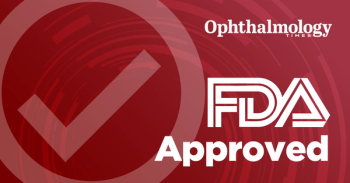
Prostaglandin analogue monotherapy's long duration may be associated with lower costs
Longer duration of use of monotherapy with prostaglandin analogues may be associated with lower annual costs of glaucoma treatment because adjunctive therapy is one of the primary factors affecting the cost of care, suggest findings of a retrospective analysis of a pharmacy claims database.
Key Points
Baltimore-Adjunctive therapy in glaucoma is a major factor in disease management costs, and a recent study suggests that longer duration of monotherapy with prostaglandin analogues could be associated with lower costs. The large retrospective study analyzed adjunctive therapy use and first-year costs for patients who were new initiators of any glaucoma therapy and, in particular, prostaglandin analogue therapy.
The results showed that patients who initially were prescribed the newer formulation of travoprost ophthalmic solution 0.004% (Travatan Z, Alcon Laboratories), which has an ionic buffered preservative system, had the highest median number of days until starting adjunctive therapy, and this formulation of travoprost also had the lowest estimated cost, said Alan L. Robin, MD. He is clinical professor of ophthalmology, University of Maryland; associate professor of ophthalmology, Wilmer Eye Institute; and associate professor of international health, Bloomberg School of Public Health, Johns Hopkins University, Baltimore.
Differences in the time to the start of adjunctive therapy may be related to the tolerability of the prostaglandin analogue or to duration of action or increased efficacy, Dr. Robin said. Although the study did not answer these questions, travoprost may be better tolerated than bimatoprost, and the slightly better results for the newer formulation of travoprost suggest that this formulation also may have been a factor, he continued.
Prescription requirements
Patients were required to have more than one prostaglandin analogue prescription and 6 months of prior claims data in which there were no claims for glaucoma therapy. Following the initial prescription, patients were required to have at least 12 months of uninterrupted use of the index prostaglandin analogue and no prescriptions for other prostaglandin analogues.
The cohort included 12,202 patients; 44% (n = 5,322) had 12 months of uninterrupted use of their index prostaglandin analogue. About 6% of the patients (n = 770) switched to another prostaglandin analogue during the 12-month study period and were not included in the analysis. Additionally, 50% of the patients (n = 6,110) stopped using all glaucoma medications during the study period and also were excluded.
Results of the analysis showed that 17.9% of the patients in the travoprost treatment group initiated adjunctive therapy during the year-long study period, as did 22.7% of patients in the bimatoprost group and 19.8% in the latanoprost group. Patients who began glaucoma therapy with the newer formulation of travoprost, however, added a second medication at lower rates than did those who were prescribed the original formulation (13.7% versus 19.7%, respectively).
The median number of days until a patient added an adjunctive therapy was 83 for the travoprost group (70.5 days for the original formulation, and 109 days for the preservative-free solution), 63 days for the latanoprost group, and 53 days for the bimatoprost group.
The investigators also analyzed the average number of days until adjunctive therapy was begun according to the index prostaglandin analogue. The mean number of days to adjunctive therapy for patients whose index therapy was travoprost was 115 (99 for the original formulation, and 136 for the new formulation). The means were 75 days for patients who began treatment with bimatoprost and 85 days for those who began with latanoprost. Differences in the median times were not statistically significant.
Analysis of the estimated annual cost of glaucoma therapy, derived from the average wholesale price in 2008, showed that cost was lowest for patients who initiated treatment with travoprost ($1,186). Cost was higher for the older formulation ($1,203) than the newer formulation ($1,160). The estimated annual costs of latanoprost and bimatoprost were $1,199 and $1,294, respectively.
Study limitations
One of the limitations of this study was its use of prescription refill data. Using this source provided the investigators with a cohort of thousands of patients, a number that would have been extremely difficult to enroll in a prospective study, Dr. Robin said, but the drawback was limited supporting detail.
"We don't know why somebody switched or why a drug was added," he said, noting that the claims database does not address patient adherence to therapy or clinical outcomes. Further study is needed to explore the clinical factors associated with duration of monotherapy, Dr. Robin added.
He also commented that the study only analyzed the direct costs of the prescriptions and was not designed to evaluate other costs that might be associated with an office visit for glaucoma management, such as time away from work, travel, parking, and assistance from family members or neighbors.
The study results were published in the April 2009 issue of Current Medical Research and Opinion.
Newsletter
Don’t miss out—get Ophthalmology Times updates on the latest clinical advancements and expert interviews, straight to your inbox.






















































.png)


